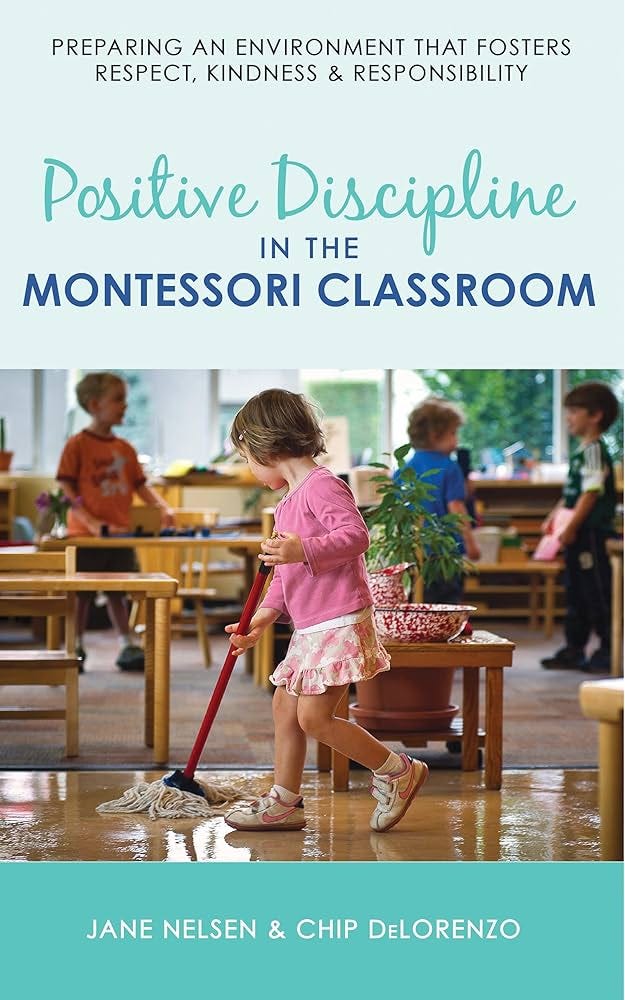This article is part of a series on approaching challenging behaviours through a Montessori lens. Read my first article here, second here, third here, and fourth here. In this series I’ve attempted to provide some principles and practices for approaching “difficult behaviors” in a more child-centered, inclusive, and loving way.
Key Practices
In these articles, I’ve proposed a series of child-centered principles and practices that can guide a community towards a more liberatory model of education. Last time, I discussed the importance of Observation, Work, Faith, Time, and Advocacy. In this article, I want to unpack just one key practice: Being Loving Strict.
Being Loving Strict
I have advocated for love as one of the key tools for the management and support of key children in a classroom environment, taking my lead from this quote from Dr. Montessori:
“All we really need to do is change our fundamental attitude towards the child, and love him with a love which has faith in his personality and goodness; which sees not his faults but his virtues.”
Maria Montessori, “Disarmament in Education”
But I want to unpack a little what I think this “love” looks like in practice. This is not a soft, passive form of love, but something more disciplined and focused. What I refer to here as being “loving strict.”
I took this phrase from Rory Stewart’s book Politics on the Edge. He uses it to describe a key balance he feels is lacking in our approach to systems management in the UK. We have to build systems that are loving and kind, that are centered in care, but these systems also have to be consistent, well-managed, and focused.
The same tension can be found in this quote from Donna Bryant Goertz describing classroom management:
“The love we give our child must not be a mere feeling that overcomes us, dissolves us, and sweeps us away. Our love for the child must be an active choice, full of decision. To be beneficial our love requires knowledge, clear purpose, and firm self-discipline. Love for a child is not indulgence, appeasement, or winning her approval, not is it discipline or lessons we teach.”
Donna Bryant Goertz, Children Who Are Not Yet Peaceful
It is not enough to just be empathetic and kind as a teacher or parent. Our love has to have purpose. It has to be rooted in our Montessori principles and practices.
Different Styles of Teaching
Another way to describe this “loving strictness” is an authoritative teaching style. Here is a chart used by child psychologists to demonstrate the four main parenting styles, based on the work of Diana Baumrind, a developmental psychologist, and Stanford researchers Eleanor Maccoby and John Martin. This can also be extrapolated to describe the different styles of teaching or even different styles of school leadership:
The 4 Parenting Styles, from Francyne Zeltser, CNBC Make It
One of the most common problems I see in those classrooms where the teachers feel overwhelmed by key children is that they tend too much towards the permissive quadrant of the chart. They are empathetic and loving, and they deeply care for these children. However, they don't pair this with high expectations - or high demandingness of those children. As well as feeling loved, children want to feel safe and they want agency. Safety comes from clear rules and expectations, and agency emerges when children are trusted to operate freely in the environment and make mistakes - to learn from the natural consequences of their actions.
Another group that struggles with key children are those teachers who tend too much to the authoritarian quadrant of the chart: those teachers that focus too much on control, rules, routines, and discipline at the expense of love and care. As these teachers try to control the “negative” behaviors they perceive in children, placing the locus of blame on the child rather than on themselves or the environment, they inevitably make the situation worse.
Most commonly, I find teachers who vacillate between the two. In fact, we’ve all been there. We have all had those moments as teachers and parents where we’ve been too permissive, and then suddenly everything seems like its spinning out of control. In order to desperately bring things back under control, we suddenly switch into authoritarian mode, trying to impose our will on the situation - shouting and threatening punishments. The key as a teacher is learning how to increasingly center your practice on a more consistently authoritative approach.
Being Authoritative
Here are a few suggestions for what this authoritative or loving strict approach looks like in practice when working with key children:
Have clear, repeated daily structures.
Be really strict and clear about basic expectations.
Not in a punitive way, but in a way that makes clear that the child’s behaviors does not meet the values of the environment and using natural consequences.
e.g. “I see that you love chewing, Sara, but you cannot chew the materials in this environment, that shows a lack of respect for our environment, which is against our class values. You must stop this behavior. But can we find a different way for you to exercise this need (For example, preparing a snack). For now, you cannot use this material until you have showed me that you have a different way for meeting this need.”
Hold high expectations for each individual child.
Have one-on-one meetings with them. Help them set goals with clear steps, hold them accountable to these goals they set. You are their coach and guide, supporting them in their self-progression.
I find that teachers consistently hold very low expectations for key children, and mistake this for kindness and generosity. What is stopping a neurodivergent child becoming the inspirational leader of your community? Rather than holding them accountable to what society has deemed “normal” or acceptable, we need a more capacious view of what success looks like - and we need to help them set a high bar for themselves.
Find healthy, safe ways for the child to discharge their energy as we continue to find the keys to their passion and concentration. Be creative. Use handwork!
See Donna Bryant Goertz’s book Children Who Are Not Yet Peaceful for some wonderful examples. For example, for one child who constantly destroys classroom materials and makes a mess, she creates a focused activity for him that encourages him to throw colorful yarn balls around the classroom allowing him to make a glorious mess. She channels and celebrates this need, rather than seeking to stigmatize and control it.
Have a clear classroom constitution that everyone upholds. This helps create clear values and principles that everyone is expected to abide by.
These should not be arbitrary and petty rules, like the rewards and punishment systems I describe in this article, but values that children want to aspire too.
Here is another example from Children Who Are Not Yet Peaceful where the community of children uphold the classroom value of “everyone does their share”:
“We’ll help you pick it up when you’re ready, but you have to do your share,” they insisted
“I won’t do it. I won’t do it!” he raged.
“But it’s your mess. You made it, and you have to clear it up before you do anything else.” They swept the materials together, put it on a rug, and pulled it out of the path.
“I won’t do it. You do it for me! Do you hear me? Do what I say!” he bellowed.
“We’ll help you do it. We already said we would. But you have to start first,” the children reasoned. “It’s your mess. You made it.”
Positive Discipline
A final plug for a system of “loving strictness” that I think beautifully aligns with the Montessori Method: Positive Discipline.
Positive Discipline is a series of approaches to behavior developed by Jane Nelsen and based on the work of Alfred Adler and Rudolf Dreikurs. The framework of positive discipline aligns well with Montessori pedagogy, and can supplement your Grace & Courtesy curriculum. It is all about striking that balance of authoritative teaching and parenting that empowers and respects children. There are a number of books in the series - including positive discipline for every developmental stage, and positive discipline for children with special needs. The book image I’ve included below, which was written by Montessorian Chip DeLorenzo, is a good place to start.
If you are a parent or progressive educator in the UK looking to get started with Positive Discipline, I recommend reaching out to UK-based trainer Gillian Corke.








Thanks Tom. I’ll see if I can get the book. I do agree fully with you and this is what I learnt too. That children learn from key children and key children try real hard to learn from the non-key children and normalize with more time in this all accepting, socially cohesive environment.
There are many moments when I see those miraculous transformations happening in both key and not key children in my environment.
And yes, the focus should be the children and the energy spent must be mostly on children. However, I stilll think that we need to work with parents because the child needs harmony too. Especially in the first plane when the child is feeling a big part of his family and school at the same time and especially in situations where the child is in school for only one work cycle. Children want to work and to contribute but when they see drastically different expectations or value systems, they feel confused and sometimes it’s so bad that they experience trauma (Oh my friends help me when I falter. My dad whacks me when I falter. But I love my dad. He is my dad. Why did my friends let me falter? Shouldn’t they also be hitting me like my loving dad? Let me make them hit me. If I hit them, they will hit back and I will feel peace) My worry is this kind of trauma that they experience.
Thank you for your wonderful articles. I enjoyed reading them and could relate to many things.
But I wondered what happened after this:
“We’ll help you pick it up when you’re ready, but you have to do your share,” they insisted
“I won’t do it. I won’t do it!” he raged.
“But it’s your mess. You made it, and you have to clear it up before you do anything else.” They swept the materials together, put it on a rug, and pulled it out of the path.
“I won’t do it. You do it for me! Do you hear me? Do what I say!” he bellowed.
“We’ll help you do it. We already said we would. But you have to start first,” the children reasoned. “It’s your mess. You made it.”
It has happened many times in my environment. While I understand it fully that the needs of ‘key children’ are higher and Montessori environments are wonderful for them, I also feel for the ‘not key children’ who many times give a lot more.
While we can hold these key children accountable or allow for natural or logical consequences to happen, it is not possible to be consistent in a classroom environment (example - a mess can be left as is sometimes but not always). So, key children do not experience consistency in the expectations and consequences in a classroom environment.
I wonder if we can hold parents of key children accountable along with the children themselves. All adults working with these children must have the same expectations. I think that Montessori educators need some practical ideas on how to work with parents of the ‘key children’ as well!